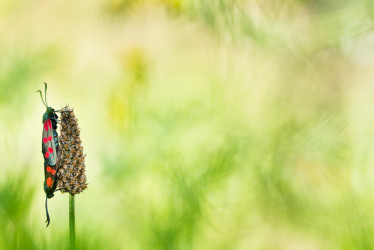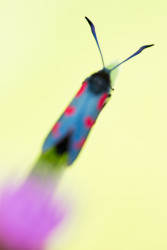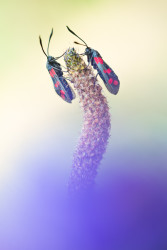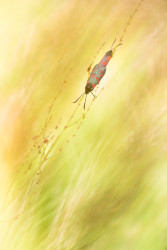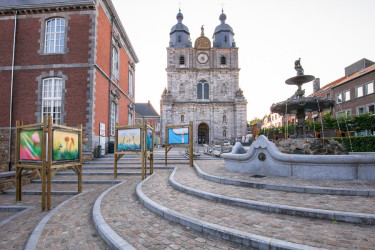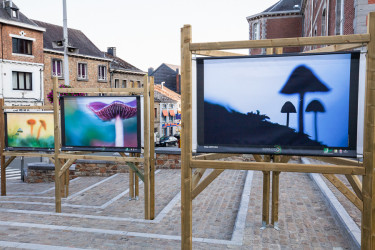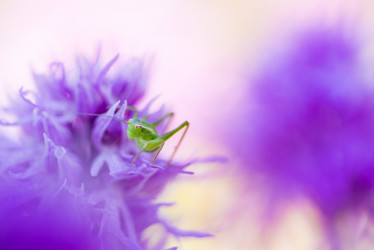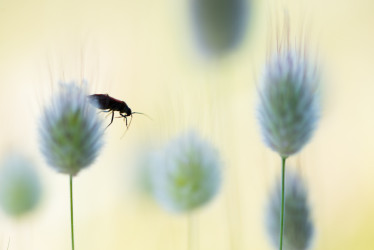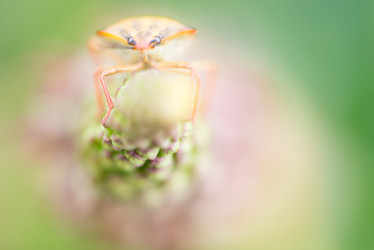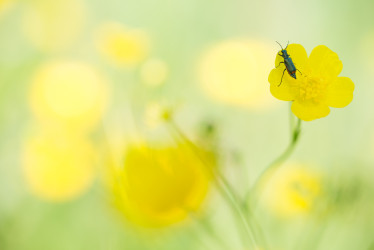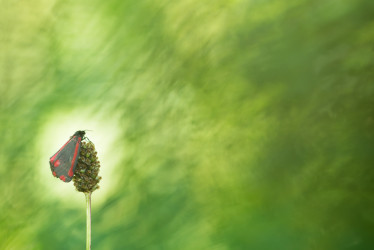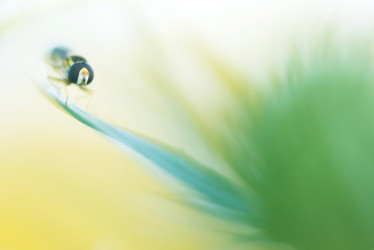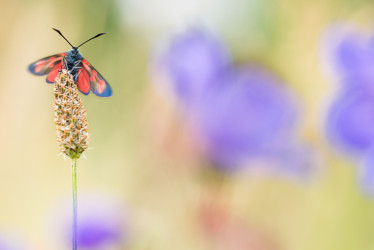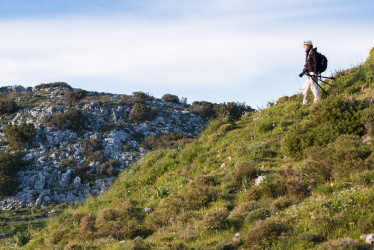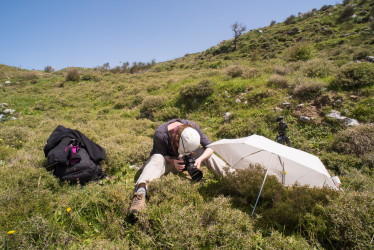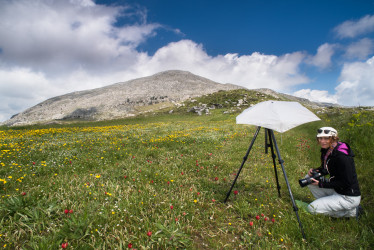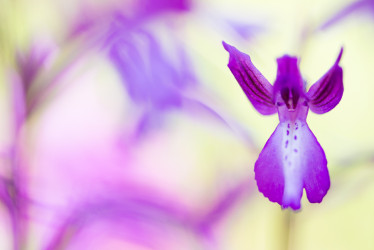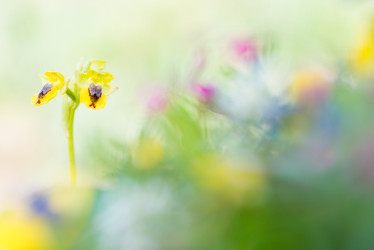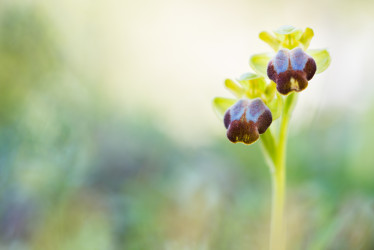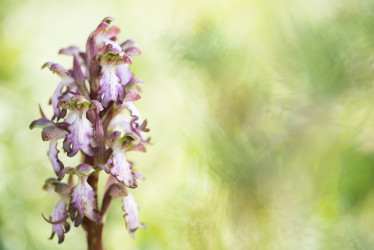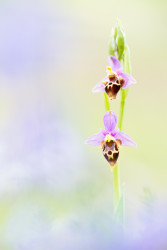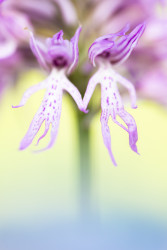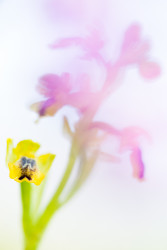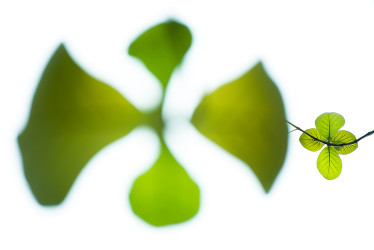-
Recent
Categories
Archives
Yearly Archives: 2015
Six-spot Burnet
I just can’t believe summer is already coming to its end now. Like I said before, this summer was a crazy one. We endured storms with fallen trees, showers with flooded cellars and even a real heat wave with people getting unwell. These extreme weather conditions have also affected me and my photography. Needless to say, when it’s windy it’s no time for macro photos. The same when it’s rainy of course. And when temperature rises above say 26 degrees, my mind and body involuntary go into some sort of a strike in which it’s impossible to even think of photography. And this while summer is one of my favorite photo seasons with its flowers and insects. I can assure you it was rather frustrating from time to time.
But… no worries, pictures have been taken. Although most of them are not of my expected subjects, I am still satisfied with the results. One of my themes from this summer that I would like to share with you is the Six-spotted Burnet, a diurnal moth. I have no idea how it is possible, but somehow I managed to create a huge delay in my photo editing. This Six-spot Burnet which I shot in June is in fact the only subject that I have now fully edited. And yep I know it’s already September. But hey… better something than nothing.
So it was June and Edwin and I where shooting poppies in a new area. Well… shooting poppies sounds better than it was. It seemed this year what not the best poppy year and this day was way after the top of the blooming period. Moreover there was more wind than there were poppies if you know what I mean. Still we wanted to give it a try. While I was standing there with my tripod and my tele lens in the field, mostly waiting for the wind to lay down, this unknown man approached me. Seen the fact that the poppies were rather disappointing I was even in for a chat this time. This man turned out to be a very friendly nature lover and photographer. He knew the area very well and often returned to enjoy nature and to take photos. Proudly he showed me his recent results on his camera. And this is where it got really interesting. He showed me among others the Six-spot Burnet which turned out to be shot just some 100 meters further away from the poppy field we where just now standing in. This you only have to say to me once! After a short chat the man continued his path, probably not aware how happy I was after receiving his information. Edwin and I tried for a short time to make something out of the poppies, but my mind already was fully with the Six-spot Burnet. Never before I have had good opportunities to shoot this butterfly. How great would it be to discover this insect here! So off we went to the unknown field with the Six-spot Burnet. And yep, the man was totally right, we found the Six-spot Burnet in large numbers. What a joy! We spent the rest of the afternoon with these beautiful butterflies and later on we have returned some more times. This little field was ideal not only because of the presence of the butterflies but also because there were hardly any people or photographers coming by. Seen the fact that the number of nature photographers is rapidly increasing, I am appreciating these quiet environments more and more. They make it possible for me to fully concentrate on my subject and to entirely enjoy nature. I hope to discover more of these areas!
Exposition Saint-Hubert
This summer Saint Hubert, a village located in the Belgian Ardennes, is the center of an outdoor photo exposition, called ‘Les étés de la photo”. More than 30 nature photographers such as Sandra Bartocha, Jérôme Pruniaux, Bastien Riu, Constant Couteille, Philippe Moës, and many others including myself are exposing. I feel honored and happy to be a part of this exhibition with 9 of my toadstool pictures. Unfortunately I have no chance to visit the forests of Saint Hubert to see the pictures, which are printed on large format of 120×150 cm, with my own eyes. Luckily there was this facebookfriend of mine, Danny Timmermans, who was so kind to take some pictures for me. Thanks Danny!
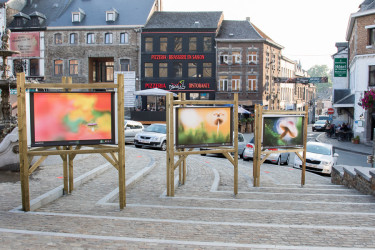 All pictures taken by Danny Timmermans.
All pictures taken by Danny Timmermans.
Accidental encounters
In my early years of nature photography (I am talking about 10-13 years ago now) I just went out into the field to shoot and I didn’t care whatever it was I was focusing my macro lens on. In fact, often I didn’t even know the names of the animals and flowers that were my photo models. Luckily there was always my boyfriend Edwin who has lots of nature knowledge and came in handy for the determination. During the last years this free way of going into the field has slowly developed into more planned trips with known subjects in advance. I never thought consciously about this change, it just happened. By the way, I think this is a good thing. It means I am changing, and so is my photography. Change is good, it means I am not standing still. I would hate to look back on my photography and discover that I am now making the same pictures as say 10 years ago. But let’s stick to my topic. Both photo approaches have there own advantages and disadvantages. I think many photographers will recognize this. Going into nature without any goal ore subject means I have no expectations so everything I shoot is like a nice bonus. On the other hand I am not really challenging myself which may result in so called mediocre photos. During the planned trips however my mind is fully occupied with the expected subject which makes me concentrated to work on a good picture. The negative side of this approach is that it makes it difficult to notice let alone photograph any other interesting objects. Moreover my plans don’t always work out and the ensuing disappointment provides me with a restless spirit which is no good for creative pictures.
Back to the here and now. This summer is a crazy one. Nothing goes as planned. Neither the weather nor my photo subjects. I guess this is how it goes with nature photography and I am still doing my best to get used to it. After all, I am a person of habits… In the meantime, while going through my material of the past months, I discovered many so called ‘accidental encounters’ with insects. These pictures were all made while looking for other plants or insects or during trips with no planned subjects in my mind. Until a while ago each of these photos on its own was oké for me but nothing more than that. I was so fixed on my planned subjects that I undervalued them. Now, while seeing them all together in the category ‘accidental encounters’ they are coming alive and they are worth sharing with you. So hereby I would like to reinstate and bring an ode to the ‘accidental encounters’!
Crete and its orchids
During our search for orchid areas Edwin and I ended up in Crete. This Greek island, which is famous for its sunny beach resorts in the north, turned out to be one of the hotspots for orchids within Europe. Far away from the touristic north side, in the central limestone mountain area, there is the plateau of Gious Kambos. This plateau is located on the western edge of Psiloritis (also called Idi) which is with 2456 meters the highest mountain of Crete. The tops of the Psiloritis are often covered with snow until the end of the spring. The area is situated near the Amari valley, about 31 kilometers south of Rethymno. It is a small but very special plateau, which is full of flowers and orchids in the spring. In fact, these famous so called ‘Spili bumps’ (one of the nearest villages is called Spili), contain about 30 different species of orchids. This is pretty much seen the fact that in entire Crete there are about 67 different species of orchids, of which 9 percent is endemic. The nature of Crete’s plant life with its many endemic species can be explained by its relative isolation as it broke away from the mainland Greece more than 5 million years ago. Also its mountainous nature creates many isolated habitats which are hardly touched by modern life and development.
The residents of Crete are fond of their flowers and orchids. Every year on the 1st of May, it is May Day. During this national holiday in Greece and Crete, it is a tradition for families to go out into the countryside and pick flowers. These flowers are made into a wreath which is then hung on the outside of their houses until 24th of June. It is believed to ward off evil spirits and to bring good luck. Cars, buses, fishing boats and taxis are also adorned with flower wreaths on this day.
Edwin and I stayed in Crete for the second part of April. The perfect time for spotting and photographing the orchids. It turned out we were very lucky, because only 2 weeks before our arrival the mountains were still covered with a layer of snow. Buses full of botanical enthusiasts came too early, what a pity. Now the locals were very happy that finally the weather had changed and spring with its higher temperatures had arrived. So were we! I can not image my disappointment when arriving at a snowy orchid destination.
Now for those of you who are very observant, you might see I was not photographing orchids in the last photo. It were the tulips (Tulipa doerfleri, very rare) that got my attention. Fact is of course, where there are orchids, there are also other flowers. I did not mind, on the contrary. The more flowers, the better. Orchids ore no orchids. I am no botanical enthusiast, I am an image enthusiast. Still, I have decided for now to show you only orchid pictures. Hoping to give you a look into a clearly defined topic. And although the names of the orchids have no priority for me at this moment, might someone of you know the names of the orchids shown, and feel the need to inform me about them, feel free! I am sure I will be very happy with the names at a later stage.
Award Asferico
While I was busy photographing flowers in Crete (soon here some pictures, stay tuned), the results of the Italian Nature Photo Contest Asferico were announced on their website. I am thrilled to be among the winners with my image ‘Good Luck’. This image might look familiar to you, because recently it also has won an award in the German Nature Photo Contest Glanzlichter. Now in the Asferico Photo Contest it again has won a highly commended award in the category Composition and forms. Congrats go to all the other winners. Take a look at the results here.


